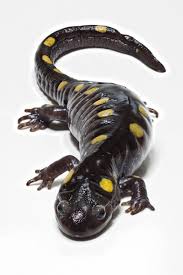Salamander:

Researchers discovered that wandering salamanders can rapidly fill, trap, and drain the blood in their toe tips to optimise attachment, detachment and general locomotion through their arboreal environment.
- The researchers have uncovered that the wandering salamanders can finely control and regulate blood flow to each side of their toe tips.
- This allows them to adjust pressure asymmetrically, improving grip on irregular surfaces like tree bark.
- The blood rushing in before “toe off” appears to help salamanders detach rather than attach.
- By slightly inflating the toe tip, the salamanders reduce the surface area in contact with the surface they are on, minimising the energy required to let go.
- Salamander is an amphibian with a slender body and a long tail.
- Their size varies with different species, ranging from 2.5 cm to 20 cm. The largest salamander in the world is the Chinese Giant Salamander, which can grow up to a length of 5 feet.
- Most salamanders look like a cross between a lizard and a frog.
- They have moist, smooth skin, like frogs, and long tails, like lizards.
- They are nocturnal and cold-blooded species and their temperature changes with their habitat.
- Some salamander species can be poisonous, and some even have teeth.
- They are capable of regenerating lost limbs within a few weeks, including tails and toes, allowing them to survive attacks from predators.
- They live in or near water or find shelter on moist ground and are typically found in brooks, creeks, ponds, and other moist locations, such as under rocks.
- They are mainly found in North America, Europe, Asia, the northern parts of South America and North Africa.




